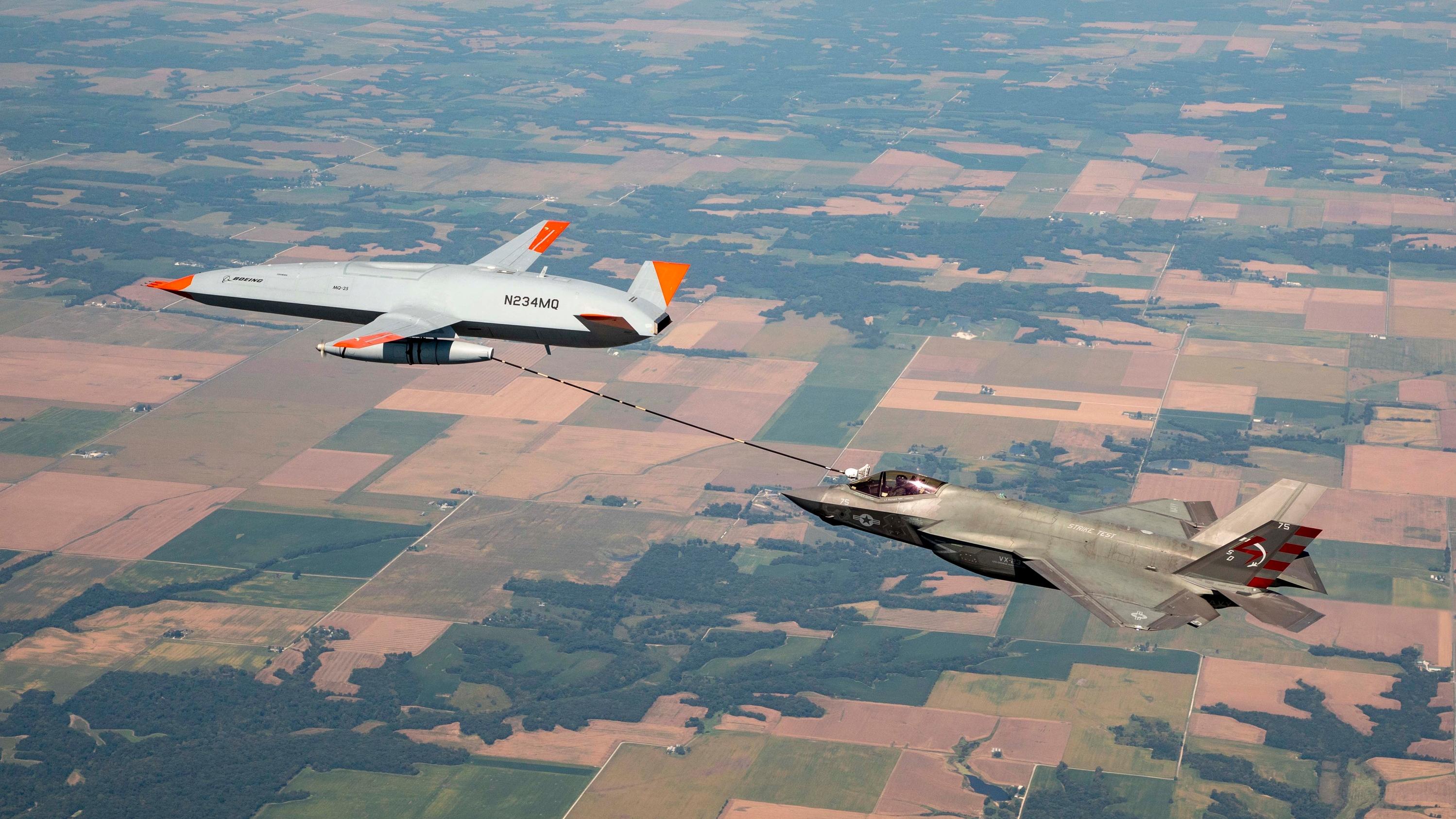
The Boeing prototype MQ-25A T1 unmanned carrier tanker refueled an F-35C Lighting II Joint Strike Fighter as part of early testing for the program, Naval Air Systems Command announced on Tuesday.
The F-35C, assigned to the “Salty Dogs” of Air Test and Evaluation Squadron (VX) 23, and the MQ-25 flew from MidAmerica Airport in Mascoutah, Ill., near Boeing’s facility in St. Louis for the test flights.
The fighter and the “Stingray” prototype drone tanker “performed formation evaluations, wake surveys, drogue tracking and plugged with the MQ-25 test asset at 225 knots calibrated airspeed (KCAS) and altitude of 10,000 feet. From the ground control station, an air vehicle operator then initiated the fuel transfer from T1’s aerial refueling store to the F-35C,” according to a statement from NAVAIR.
Developing the #AirWingoftheFuture
The #USNavy completed the first aerial refueling of an #F35C Lightning II by the @Boeing MQ-25, a broader initiative to field unmanned systems to enhance capability, capacity and lethality. #FlyNavy #MQ25
DETAILS: https://t.co/WG0A8CnWaj pic.twitter.com/K692RT8DlR
— U.S. Navy (@USNavy) September 14, 2021
The refueling follows tests of an F/A-18F Super Hornet in June and an E-2D Advanced Hawkeye last month.
“Following this flight, T1 will enter into a modification period to integrate the deck handling system in preparation for a shipboard demonstration this winter. To date, T1 has conducted 36 flights, providing the program with valuable information on aerodynamics, propulsion, guidance and control in advance of the MQ-25 engineering and manufacturing development aircraft deliveries,” NAVAIR said.
“As unmanned tanking capacity increases, the manned tanker requirement decreases, promoting additional service life and capacity available for manned strike-fighter missions.”
The Stingrays will deliver up to 15,000 pounds of fuel 500 nautical miles away from the carrier and will relieve the tanker burden on the existing Super Hornet fleet, USNI News has reported.
A Norfolk, Va., deck handling demonstration on a carrier in port will be the last set of tests for the prototype Boeing built in 2014 as the company’s bid for the canceled Unmanned Carrier Launched Airborne Surveillance and Strike (UCLASS) program. The company repurposed the airframe for the aerial refueling mission and won an $805 million contract in 2018 to build the first four Stingrays in a competition that also included General Atomics and Lockheed Martin. Last year, the Navy exercised an $84.7 million contract to buy three more, with a goal of a fleet of 76 for $1.3 billion.
The EMD models, set to enter the fleet next year, will be fully capable of operating at sea – unlike the prototype.
The aircraft will be folded into the airwing’s E-2D and carrier onboard delivery communities. The fleet replacement squadron, Unmanned Carrier-Launched Multi-Role Squadron (VUQ) 10 will stand up later this year and be followed by carrier-deployed VUQ-11 and 12.





